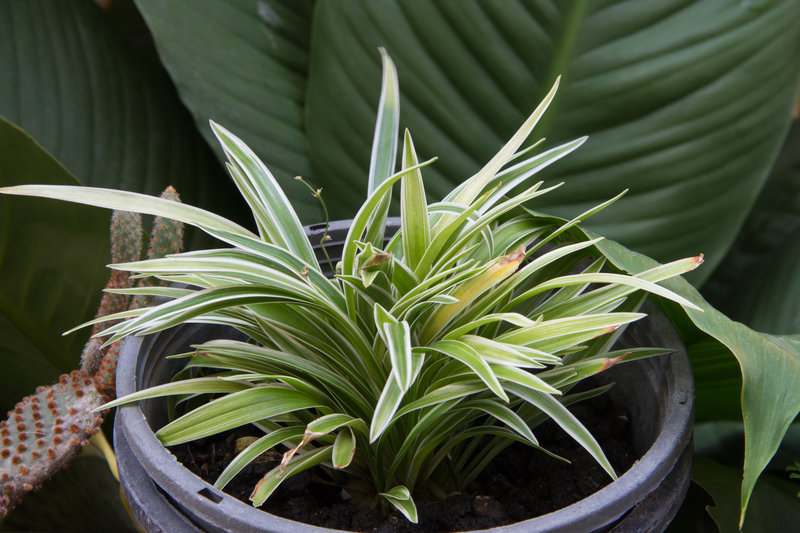Green Beginnings: How to Nurture Your Lawn from the Ground Up
Your lawn is more than just a patch of grass — it’s a living ecosystem that boosts your home’s curb appeal, provides a safe zone for family fun, and positively impacts your local environment. If you’re longing for a rich, healthy, and lush green carpet underfoot, it’s time to understand the essence of nurturing your lawn from the very roots — literally.
This comprehensive guide will walk you through every essential aspect of lawn care and nurturing: from soil preparation and grass selection to maintenance routines and sustainable techniques. Discover the essential steps to give your lawn the best possible start and maintain its vibrancy through all seasons.
Understanding Your Soil: The Foundation of a Lush Lawn
Every green beginning starts below the surface. The health of your lawn grass is directly connected to the condition of your soil. A thriving lawn requires attention to soil structure, pH, nutrients, and drainage.
1. Testing Your Soil: Why It Matters
Before planting new grass or reviving an old patch, conduct a soil test. Why? Because it reveals the pH level (how acidic or alkaline your soil is), the concentrations of key nutrients like nitrogen, phosphorus, and potassium, and identifies any deficiencies.
- Optimal Lawn pH: Most grasses prefer a pH between 6.0 and 7.0.
- Testing Options: Mail-in soil test kits and DIY kits are both available at garden centers.
2. Improving Soil Structure
If your soil is too compact, sandy, or clay-heavy, your grass roots will struggle. Aerate by poking holes in the ground to allow for air, water, and nutrients to penetrate deeper. Add organic compost to enrich poor soils, improve drainage, and boost beneficial microbial activity.
- Clay Soils: Aerate and mix in compost or gypsum.
- Sandy Soils: Add compost to retain moisture.
- Compacted Soils: Use a core aerator in spring or fall.

Selecting the Best Grass for Your Region
Choosing the right grass seed is vital for long-term lawn success and greenscape longevity. Grass types are typically categorized by climate:
- Cool-season grasses (e.g., Kentucky bluegrass, fescue, rye): thrive in northern climates, best planted in fall or spring.
- Warm-season grasses (e.g., Bermuda, zoysia, St. Augustine): flourish in southern and hot, dry climates, best sown or sodded late spring or early summer.
Consult local extension offices or nurseries for recommendations suited to your local environment.
Step-by-Step: How to Start Your Lawn from Scratch
1. Clearing and Prepping the Area
Remove weeds, rocks, and debris. If dealing with a large area, use a sod cutter to eliminate old grass and roots.
- Level the ground with a rake, smoothing out high and low spots.
- Install edging if desired to keep grass from invading beds.
2. Amending and Fertilizing the Soil
Spread organic materials (compost or well-rotted manure) and appropriate starter fertilizer based on your soil test. Rake these amendments into the top 2-3 inches of soil for even distribution.
3. Sowing Seed or Laying Sod
- Seeding: Evenly distribute grass seed, using a broadcast spreader for large lawns. Lightly rake to ensure good seed-to-soil contact, then press with a roller.
- Sodding: Lay sod tightly in a brickwork pattern, staggering seams. Press firmly to root contact. Fill in any gaps with topsoil and grass seed.
4. Initial Watering and Care
Water gently but thoroughly after seeding or sodding. The first few weeks are crucial:
- Keep soil lightly moist until seeds germinate or sod establishes roots (generally 2-3 weeks).
- Gradually reduce watering frequency as roots grow deeper.
Ongoing Lawn Care: Building Lasting Green Beauty
1. Watering Wisely
Efficient watering conserves resources and prevents disease. The rule of thumb:
- 1 inch of water per week, including rainfall, is ideal for most lawns.
- Water deeply and less frequently to promote deep root growth.
- Early morning is the best time to water — this reduces evaporation and disease risk.
2. Fertilizing for a Healthy Lawn
Proper and timely fertilization is key to vibrant lawn grass vitality.
- Use slow-release fertilizers to provide steady nutrients.
- Follow a seasonal schedule: spring and late summer for cool-season lawns, late spring for warm-season lawns.
- Always adhere to label instructions to avoid burning your grass.
3. Mowing Best Practices
Regular mowing encourages dense, resilient turf while discouraging weeds:
- Cut no more than one-third of the grass blade per mow.
- Keep mower blades sharp to avoid tearing grass (which can invite disease).
- Vary your mowing pattern to reduce soil compaction and grass wear.
- For most lawns, set your mower height to about 3 inches.
4. Managing Weeds, Pests, and Disease Naturally
A thick, healthy sward is the best natural defense against weeds and pests. However, if invaders do appear:
- Hand-pull weeds or spot-treat with eco-friendly solutions (like vinegar for broadleaf weeds).
- Encourage beneficial insects (e.g., ladybugs, nematodes) to reduce pest outbreaks.
- Practice crop rotation with ornamental beds to reduce disease build-up.
If chemicals are necessary, use them sparingly and safely, always following local regulations.
Sustainable Lawn Care: Greener from the Ground Up
Modern green lawn care goes beyond just achieving a perfect appearance— it’s about sustainability. Here’s how to nurture your lawn while also taking care of the environment:
- Mulch grass clippings: Leave them after mowing to add nitrogen back into the soil.
- Compost yard waste: Reduce landfill waste, enrich your lawn’s soil with home-made compost.
- Native grasses: Consider using species adapted to your local ecosystem – they need less water, fertilizer, and mowing.
- Rainwater irrigation: Collect rainwater for irrigation to conserve potable water.
- Limit chemical use: Over-reliance on synthetic fertilizers and weed killers harms pollinators and water quality.
Frequently Asked Questions
How do I repair bare patches in my lawn?
- Remove dead grass and debris from the area.
- Loosen the soil and amend if needed with compost.
- Sow fresh seed or patch with pieces of sod.
- Water well, keep moist until new grass is established.
What’s the best way to prevent lawn diseases?
- Good drainage, proper fertilization, and regular mowing help create conditions that deter disease.
- Avoid watering in the evening — damp overnight conditions encourage fungal growth.
- If a specific disease appears, consult your local extension office for eco-friendly treatment options.
How often should I aerate my lawn?
Aerate once per year, ideally in the fall for cool-season lawns or late spring for warm-season lawns, to relieve compaction and encourage deep root growth.
Is overseeding necessary?
Overseeding is helpful to thicken sparse lawns, crowd out weeds, and improve disease resistance. Best do this in early fall or spring.

The Benefits of Starting Your Green Lawn from the Ground Up
When you nurture your lawn properly, the advantages extend beyond mere aesthetics:
- Enhanced curb appeal increases property value.
- Dense turf prevents erosion, filters pollutants, and moderates temperature around your home.
- Chemical-free approaches protect children, pets, and wildlife.
- Mindful stewardship makes your landscape resilient to drought, pests, and environmental stress.
Conclusion: Your Lawn's Health Starts Underground
Green beginnings aren’t just about laying new sod or scattering seed. They’re about nourishment, patience, and stewardship from soil to sky. By choosing the right grass, tending your soil, watering judiciously, and embracing eco-friendly practices, you set the stage for years of lush, sustainable growth.
Regardless of whether you’re rejuvenating an established yard or converting bare earth into a green oasis, remember: the journey toward a perfect lawn is ongoing. Every season offers a new opportunity to observe, adjust, and learn — giving your landscape stronger roots and greener shoots, year after year.
Ready to begin your own green journey? Start by testing your soil, selecting the best grass for your region, and following the practices outlined here to nurture your lawn from the ground up. Your sustainable lawn of tomorrow starts below your feet today.